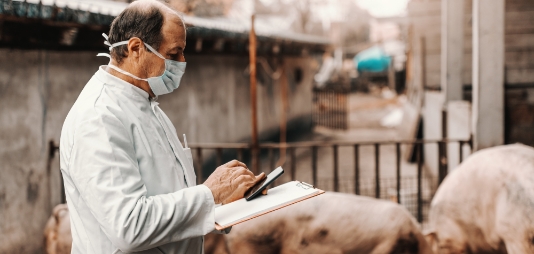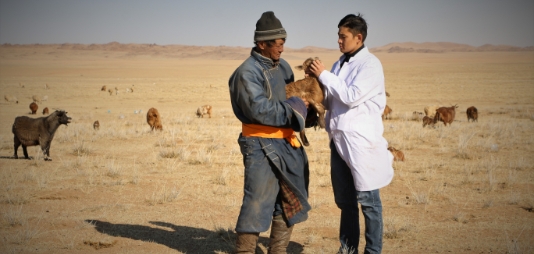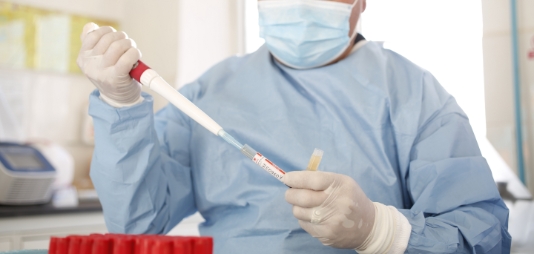ARTICLE
Achieving
One Health by
protecting wildlife health
Humans and animals–both wild and domestic–are interdependent. Protecting wildlife health preserves human health, food security and livelihoods. For this reason, the World Organisation for Animal Health (OIE) has reinforced its One Health approach by launching a new framework on wildlife health.
Managing disease risk while protecting wildlife health
As exposure between wildlife, livestock and humans increases with deforestation, climate change and other human activities, so does the risk of disease transmission. In the past 20 years, most emerging infectious diseases affecting humans were of animal origin, frequently from wildlife, including SARS, AIDS and Ebola.
After the emergence of a new disease, wildlife is often perceived as a threat. However, wildlife is a vital resource for several communities worldwide: it contributes to socioeconomic development, food security and even cultural integrity. Wildlife is also central to global environmental health: it provides essential ecosystem services and is a precious source of biodiversity. Decline of wildlife populations is not merely a conservation issue. It can impact pollination, pest control, food chains, soil productivity… and thus human health and well-being.
For all of these reasons, wildlife health is a human concern.
In the past 20 years,
%
emerging infectious diseases affecting humans had an animal origin
%
Fostering sustainable and responsible practices in wildlife trade
In recent years, poorly regulated wildlife trade has been identified as one of the drivers for disease emergence, as it results in new interactions allowing for cross-species pathogens transmission. As COVID-19 started unfolding and acknowledging its potential wildlife origin, the OIE mobilised its network of experts under the leadership of its Working Group on Wildlife to provide scientific advice.
Created more than 25 years ago to advise on health problems relating to wild animals, the OIE Working Group on Wildlife has been working extensively with other experts during the COVID-19 pandemic to better understand the origins of the virus and to enhance the capacity of countries to respond to the crisis. The group has also called for action to reduce the risk of future spillover events. In this vein and thanks to the financial support of Australia, the OIE is already developing guidance to foster sustainable practices in wildlife trade, transportation, capture, farming, marketing and consumption. Given that wildlife remains an important source of protein and income for many communities, this guidance will respect and consider local customs.
The COVID-19 pandemic stemmed from the introduction of a novel coronavirus, SARS-CoV-2. While all evidence points to a natural origin from an animal source, further investigation is needed to understand the exact source and the route of entry to humans.
The OIE Wildlife Health Framework: a step toward One Health
As part of its mandate, the OIE has been providing support on wildlife health management at regional and national levels through its network of experts and specialised Collaborating Centers. At the international level, it has been reinforcing international transparency of disease events in wildlife through its WAHIS-Wild platform.
Acknowledging the need to strengthen the wildlife component of the One Health approach, the Organisation released a new Wildlife Health Framework in 2020: a major step toward reducing the risks of future pandemics. This framework pursues two main goals:
- Improving OIE Members’ capacity to manage risks at the human-animal-ecosystem interface, while protecting wildlife.
- Supporting OIE Members to improve their surveillance systems, early detection, notification and management of wildlife diseases.
Veterinary Services are central to wildlife risk management
National Veterinary Services are at the forefront of zoonotic disease management. Hence, they can play a key role in reducing the risk of spillover events by working in collaboration with wildlife management authorities, and by extending their actions to the health of wild species.
However, many Veterinary Services around the world lack the capacity, resources and relevant frameworks to reach their full potential in this area. The OIE aims for its Wildlife Health Framework to build knowledge and awareness on the crucial role of Veterinary Services in preserving wildlife health, while strengthening their capacities to reduce and manage risks.
As many other animal diseases, Rinderpest affects both wildlife and livestock. It was the initial trigger for establishing the OIE in 1924. Thanks to joint efforts and collaboration, global freedom from this disease was declared in 2011.
Empowering our Members for wildlife risk management
The OIE wildlife framework outlines solutions for more effective monitoring and early detection systems. Surveillance in wildlife must be considered just as important as surveillance in domestic animals. If the risks are detected at their wildlife source, intervention strategies can be timely carried out, reducing the risk of disease spread to other animals or people. Monitoring wildlife health can also provide key insights to identify and predict critical environmental health threats. By building on the existing network of reference laboratories and improving coordination between partners, the OIE is helping develop more rapid and effective diagnosis processes.
The OIE also highly encourages Members to notify diseases specific for wild animals through the WAHIS-Wild interface. By doing so, not only do countries help prevent their global impact, they also show that they have effective surveillance systems in place and that they are implementing a One Health approach by considering the whole ecosystem.
Case study: Managing the risk of Ebola in Africa
In response to the 2014-2016 Ebola outbreak, the OIE and its partners have been implementing the EBO-SURSY Project in West and Central Africa. Funded by the European Union until the end of 2023, its goal is to strengthen early detection systems for the Ebola virus as well as four other haemorrhagic fevers–five diseases that can spread from animals to humans.
The EBO-SURSY Project has been a valuable mechanism in the battle against new Ebola outbreaks through its promotion of a One Health approach. Actors from across different sectors, including conservationists, forestry services, national Veterinary Services, epidemiologists and data managers, were trained to rapidly react after the detection of dead or sick wild animals. During the project, the tracking and sampling of migrating bats, showed how the animals are capable of transmitting pathogens across long distances, and could help predict future outbreaks.
Furthermore, the strengthened diagnostic capacity in laboratory workers who were trained through the project helped countries, like the Republic of Guinea, respond more effectively to the COVID-19 pandemic. The country’s lab technicians and biologists, trained on state-of-the-art pathogen diagnostic techniques, are now able to signal potential outbreaks rapidly, be it to report cases of Ebola in animals, or COVID-19 in humans.
In the upcoming years, the project will expand its scope to research the dynamics of coronaviruses at the human-animal-ecosystem interface in West and Central Africa.


